By Adriana Zuniga and Andrea K. Gerlak
07/30/19 05:23:pm
Plans are underway to continue our engagement with Star Academic High School. Building from our earlier Tucson Verde para Todos project efforts, we recently received a $4,000 “Grassroots Seed Grant” from the University of Arizona’s (UA) College of Architecture, Planning and Landscape Architecture (CAPLA) to foster interdisciplinary collaboration across UA colleges. This next round of engagement will focus on monitoring and maintenance, key steps in GI design and implementation.Star’s new principal, Theresa Tenace is ready to get started. “We are on board for this project” said Principal Tenace when presented with the project.
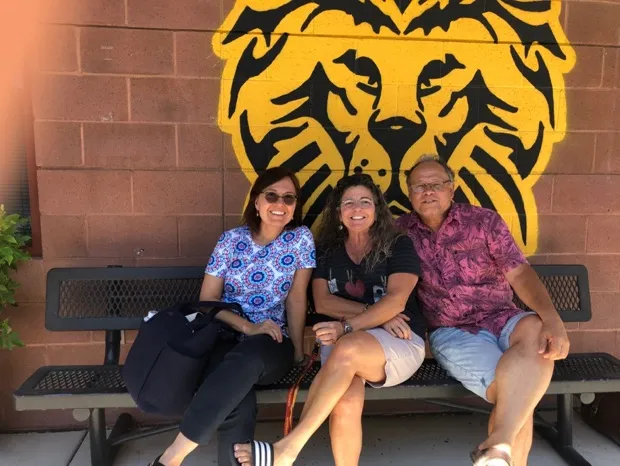
Adriana Zuniga, Theresa Tenace, and Joaquin Murrieta
This most recent stream of funding will further collaboration with the Sunnyside Unified School District, local NGOs, and university researchers and students. As part of these efforts, our team recently installed green infrastructure in the form of raingardens. The project also highlighted a strawbale seating area, student art and educational signage.Most recently, a new bus shelter was installed by the City of Tucson’s Department of Transportation to provide shade and seating space to bus users that travel to and from Star.
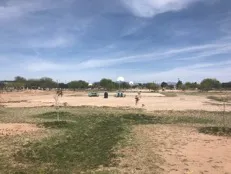
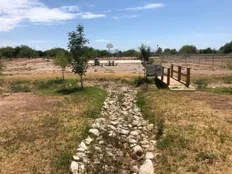
Backyard at Star Academic High School – before winter 2018 implementation project (top) and after (bottom).
UA students are key to project success. Next steps include the recruitment of UA undergraduate students to join the project as interns. UA interns will engage with Star high school students to collect data on the functioning of the raingardens. Here students will measure physical science variables, including wildlife in school raingardens, temperature reduction, and stormwater runoff captured on site during storm events. In addition, students will also monitor social science variables including the perception of school aesthetics, understanding of green infrastructure and climate change, use of the bus shelter, and willingness to adopt green infrastructure at home.
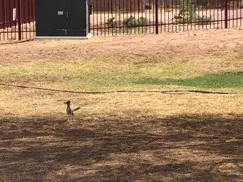
Roadrunner observed in the school grounds during recent visit to Star Academic High School.
In addition to monitoring, maintenance of the GI at Star Academic High School is a key part of the university-community partnership. We plan to bring together partners, students, and the larger community for a fall 2019 work day, where we will replace dead trees, clean the raingardens from weeds and trash, fix and repair whatever is broken, and plant more trees, grasses, cacti, and pollinator plants. We also hope to expand the area of green infrastructure in the school by harvesting runoff from the street.
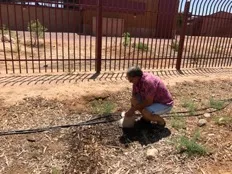
Joaquin Murrieta of Tucson’s Watershed Management Group examines a leaking hose that was bitten by an animal. Repairs like this will be made at a fall 2019 work event at Star Academic High School.
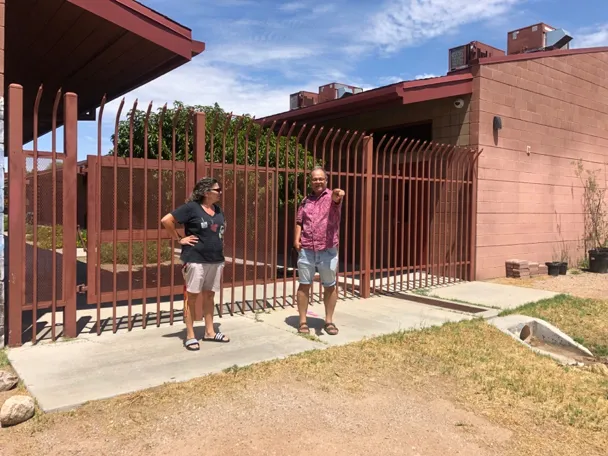
Joaquin Murrieta explaining the project to Principal Theresa Tenace
Community engagement is fundamental to address environmental justice issues. It takes time to build trust and build relationships that last. Therefore, continuing engagement with Star is very important to leverage previous work and ensure the benefits from previous engagement efforts reach the next level.

